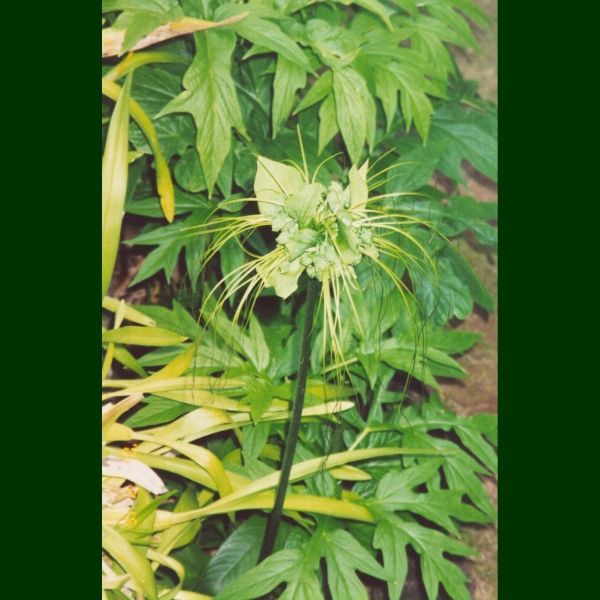 Hawaiian Name(s): pia
Hawaiian Name(s): piaScientific Name: Tacca leontopetaloides
Vernacular Name: Polynesian arrowroot
Family: Taccaceae
Status: Polynesian introduction
Authority: (L.) Kuntze
Description: Perennial herbs forming a tuber.
Habitat Occasionally cultivated but long naturalized in disturbed areas such as grassy slopes and mesic valley floors from 3–330 m (Kaua‘i, O‘ahu, Moloka‘i, Maui, Hawai‘i, maybe others?) (Wagner et al. 1990:1613–1614).
Medicines: Pia is a secondary ingredient to treat ho‘opapailua lua‘i (nausea) and lua‘i mau ( continual vomiting). The green leaves of ha‘a are gathered and eaten. Once chewed into a fine mash and swallowed, four lumps of pia are mixed with water and drunk. This will end nausea and vomiting (Chun 1994:72). It is also noted as a secondary ingredient in many other medicines (see other plants).
Non Medicinal Uses: Cultivated for its starchy tubers (Krauss 1993:8,15).
Specific gravity of wood: n/a
Famous Locations:
Mele:
`Ōlelo Noeau:
Dye Color and Parts:
Kino lau:
Location on Bishop Museum Kalihi Campus:
Propagation Information: (Handy et al. 1972:183).
